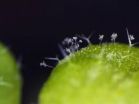(Press-News.org) HUNTSVILLE, TX (9/16/14) -- Police agencies are using Geographic Information Systems (GIS) for mapping crime, identifying crime "hot spots," assigning officers, and profiling offenders, but little research has been done about the effectiveness of the technology in curbing crime, according to a study at Sam Houston State University (SHSU).
"This review provides a reality check on the current status of GIS assessment in policing and the findings are not positive," said Yan Zhang, a SHSU professor and co-author of "Geographic Information System Effects on Policing Efficacy: An Evaluation of Empirical Assessments." "Published accounts of applications in policing suggest a significant role in crime analysis and strategic deployment. Nonetheless, there is a total lack of independent evaluation of GIS effect in policing organizations."
According to a 2001 survey by the National Institute of Justice, 62 percent of police departments with over 100 officers use GIS systems. Collectively, the technology has been credited with reducing crime, decreasing residential burglaries, tracking parolees and serious habitual offenders, and identifying "hot spots" with high concentrations of crime.
There are four major uses for GIS in policing, the study found. Crime mapping identifies the geographical distribution of crime to deploy officers to "hot spots" of activity and to develop other intervention plans.
Many departments have developed computerized statistics or CompStat systems to help manage the decision-making process. The system assists with instant crime analysis, deployment techniques, active enforcement of trivial crimes, monitoring of emerging patterns, and accountability programs for law enforcement managers.
GIS also is used to create geographical profiling of offenders, an investigative method that allows police to identify locations of connected crimes to help determine where an offender may live, particularly in serial cases.
While these practices are widespread, especially in larger departments, little research is available to measure their effectiveness in policing. Current studies indicates that GIS is used mainly to aid in the design of policing strategies and/or to evaluate the decision-making processes at law enforcement agencies.
"There is a near total lack of independent evaluations of GIS effects in police organizations," said Zhang. "Since GIS represents a significant element of both strategic and tactical decision making for law enforcement agencies, purposeful, focused and relevant evaluations would contribute to maximizing GIS efficacy."
INFORMATION:
The study, which was co-authored by Larry Hoover and Jihong (Solomon) Zhao at SHSU's College of Criminal Justice, was published by the International Journal of Applied Geospatial Research.
Sam Houston State study examines use of GIS in policing
2014-09-16
ELSE PRESS RELEASES FROM THIS DATE:
Do you always get what you pay for? How consumers mispredict product quality
2014-09-16
Consumers are willing to spend thousands of dollars for luxury brand watches such as Rolex and Cartier because they are synonymous with high quality. But does this mean that inexpensive watches made by low-cost rivals must always be low quality? According to a new study in the Journal of Consumer Research, consumers mistakenly predict product quality based on quality consistency in other price ranges.
"Highly consistent quality in one price range is enough for consumers to assume that quality can be predicted by price. Based on this belief, consumers assume high or low ...
Do ads showing sexy women make male consumers less charitable?
2014-09-16
What happens when you use images of sexy women to attract men's attention? According to a new study in the Journal of Consumer Research, male consumers who are shown images of sexy women feel less connected to other people and are less likely to purchase products advertised as benefiting others or make charitable contributions.
"Images of sexy women are ubiquitous in modern society and heavily used in advertising. Our primary focus is to show how exposure to pictures of sexy women could temporarily decrease the male consumer's sense of psychological connectedness with ...
Why are consumers willing to spend more money on ethical products?
2014-09-16
What motivates consumers to make ethical choices such as buying clothing not made in a sweat shop, spending more money on fair-trade coffee, and bringing their own bags when they go shopping? According to a new study in the Journal of Consumer Research, ethical consumption is motivated by a need for consumers to turn their emotions about unethical practices into action.
"Advocates of ethical consumerism suggest that consumers should consider the environmental and human costs of the products they choose, but unfortunately only a small number of people in North America ...
Exxon Valdez 2014: Does media coverage of manmade disasters contribute to consumer complacency?
2014-09-16
Twenty-five years ago, the Exxon Valdez spilled 11 million gallons of oil into Alaska's Prince William Sound. Americans found themselves cleaning up another giant oil spill in the Gulf of Mexico in 2010. According to a new study in the Journal of Consumer Research, news coverage of environmental disasters serves to calm our immediate anxieties instead of catalyzing changes in the way fossil fuels are used.
"We found that the national news media coverage of these two events helped to resolve many of the cultural anxieties that resulted, explaining what many environmental ...
Can consumers use an easy trick to extend wonderful experiences and shorten bad ones?
2014-09-16
Many experiences rarely seem to last the right amount of time. Vacations feel too short, meetings seem too long, and bad dates never seem to end. A new study in the Journal of Consumer Research finds that simply categorizing experiences can help consumers extend good experiences and shorten the bad ones.
"Consumers do not just focus on individual experiences. Instead, they categorize and manage experiences in a way that stretches out good experiences and shortens negative experiences. For positive experiences, consumers are reluctant to eliminate categories, while the ...
Lucky loyalty? Devoted consumers believe they have earned the right to win random rewards
2014-09-16
Loyal consumers can earn benefits such as frequent flyer miles or free nights at hotels when they participate in rewards programs. Loyalty, of course, doesn't increase the odds of winning random prizes or receiving random discounts. According to a new study in the Journal of Consumer Research, consumers who have shown loyalty to a company giving a random reward mistakenly believe they are more likely to receive the reward because they deserve it.
"Even though prior effort or patronage does not increase the actual likelihood of a consumer receiving promotional discounts ...
Good networkers make prime targets
2014-09-16
Proteins are responsible for practically all vital functions in an organism. For example, they catalyze metabolic reactions, forward signals, transport particular substances and control immune system responses. Researchers established some years ago that proteins do not function independently of each other, but instead form complex networks.
"When you examine the protein networks, you find many similarities with online social networks," says Dr. Pascal Falter-Braun from TUM's Chair of Plant Systems Biology. "Some proteins are good networkers that maintain contact with ...
Cancer-fighting cocktail demonstrates promising results as treatment for advanced cervical cancer
2014-09-16
DALLAS – September 15, 2014 – Combining a standard chemotherapy drug with a second drug that stops cells from dividing improves both the survival and response rates for those with advanced cervical cancer, a new study by UT Southwestern Medical Center cancer researchers finds.
The cancer-fighting cocktail, which combines the chemotherapy drug cisplatin with pemetrexed - an agent that stops cancer cells from dividing - showed promising results for advanced, persistent, or recurrent cervical cancer.
"We found that pemetrexed combined with cisplatin is less toxic, well ...
Caving to cravings? Indulging in junk food linked to lapses in brain function
2014-09-16
Overindulging in high-calorie snacks is partly caused by lapses in a very specific part of the brain, according to a new University of Waterloo study.
The study, published in Psychosomatic Medicine: Journal of Biobehavioral Medicine, is the first to conclusively link reduced operation of the dorsolateral prefrontal cortex with self-restraint in the dietary context.
"It has long been thought that the dorsolateral prefrontal cortex helps to keep automatic, or knee-jerk, reactions in check," said Professor Peter Hall, senior author on the study. "We discovered that when ...
Powerful synergies across different sectors improve health of poor women and children
2014-09-16
New studies have uncovered the specific interventions and advances that have led to the success with these at-risk populations in the poorest countries.
New research across 142 countries finds that some 50 percent of the reduction in under-five child mortality in those countries is attributable to high impact health interventions such as early immunizations and skilled birth attendance.
The remaining 50 percent is due to factors outside the health sector, such as girls' education, women's participation in politics and the workforce, reduction of fertility rates, access ...


